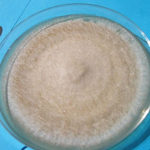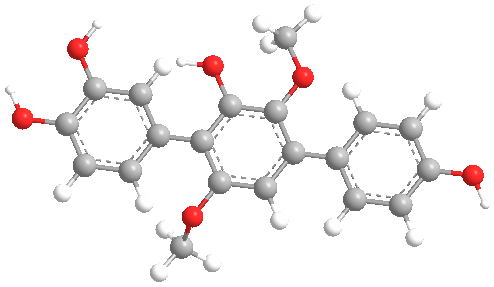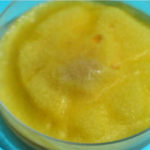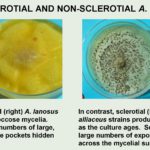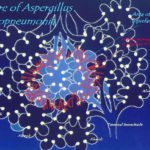Date: 26 November 2013
Secondary metabolites, 3D structure: Trivial name – 3-hydroxyterphenyllin
Copyright: n/a
Notes:
Species: A. candidusSystematic name: [1,1′:4′,1”-Terphenyl]-2′,3,4,4”-tetrol, 3′,6′-dimethoxy-Molecular formulae: C20H18O6Molecular weight: 354Chemical abstracts number: 66163-76-6PubChem URL: Go to PubChem linkSelected references: Kurobane, Itsuo; Vining, Leo C.; McInnes, A. Gavin; Smith, Donald G. (Dep. Biol., Dalhousie Univ., Halifax, NS B3H 4J1, Can.). J. Antibiot., 32(6), 559-64 (English) 1979.
Images library
-
Title
Legend
-
Sclerotial strains produce bright yellow, floccose mycelia. Sclerotial strains produce small numbers of large, fused sclerotial bodies in discrete pockets hidden within the mycelium.
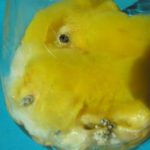
-
Aspergillus alliaceus. No branching was observed in A. alliaceus conidiophores. Sclerotial strains typically produce large numbers of exposed, uniformly-shaped sclerotia across the mycelial surface.

-
Aspergillus alliaceus – Sclerotial. A. alliaceus strains produce flat, pale mycelia that darken as the culture ages.Sclerotial strains typically produce large numbers of exposed, uniformly-shaped sclerotia across the mycelial surface.

-
A. alliaceus strains produce flat, pale mycelia that darken as the culture ages.Sclerotial strains typically produce large numbers of exposed, uniformly-shaped sclerotia across the mycelial surface.
